Advances In Tyre Building Machinery
- By Gregers Lindvig
- June 16, 2021
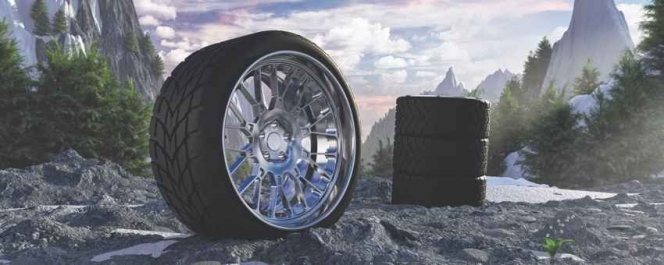
The tyre is an amazing example of something that has served its purpose for more than a century with no drastic functional changes but has yet undergone constant improvement and sometimes fundamental structural changes. Materials have changed from leather to natural rubber, and then to ever-developing compounds of natural and synthetic rubber, as well as chemicals. Structurally, the largest change has been from bias to radial casing construction, and while some tyre products are now largely only radial tyres – passenger car tyres, for example – other vehicle segments still consume a large quantity of bias tyres; in some regions of the world more than others.
While the equipment required to produce bias tyres is fairly simple, and the costs of establishing a production line therefore relatively manageable – roughly speaking it’s a textile production line combined with vulcanizing in simple 2-part moulds – the costs of establishing a radial tyre production line are massive. From rubber calenders to radial steel belt production and angle cutting over bead ring building and green tyre building drums, until finally curing in 8-segment moulds – and many more steps and essential equipment not mentioned in between. Each machine and process is as important as the next, and only the most skilled management of the entyre production flow can ensure that a quality product comes out at the end. So, needless to say, many of the quality improvements of the past decades have come from improving production equipment and knowledge as much as from improving tread designs and rubber compounds.
Chinese factories
Further, as many tyre production equipment manufacturers have expanded to supply all over the world, many production lines have become much more similar to each other as they approach the worldwide optimal standard for balancing production costs and quality. I won’t mention any specific manufacturer names here, but anyone who has visited a tyre factory in China will have had an employee guide proudly point out that they use only the best equipment from manufacturers in the Netherlands, Japan, Germany, and the USA. I’ve always been tempted to ask if the hammer is more important or the person who wields it, but I digress. The fact is that most Chinese factories have also improved drastically in terms of management and comply with IATF 16949 standards to ensure consistently high-quality levels and constantly reduce defects. The main driver and reason for the current standards is the reduction of manual work stations and a large manual labour workforce to largely automatic or at least semi-automatic machinery, reducing the manual labourers to employees simply moving materials or finished products from one place to another. Over time, these will also be made redundant, as machines will also handle this part.
The question remaining is just how factories located in low-wage countries will keep competitive as the necessary equipment costs the same all over the globe, and less hands are needed to operate the massive production lines. When the lines all over the world only need core staff to monitor and make technical adjustments and maintenance work, the difference in the product cost structure can only come from land and building use, logistics and handling costs, as well as water, heating, and electricity fees. Especially the latter, utility fees, probably soon make up the most important factory when it comes to differentiating tyre cost structures across the world.
Global supply
What will this mean for the global tyre supply? Most likely, it will be good news for the environment, as it won’t make as much sense as previously to send products across the globe, because the transportation costs will make the products more expensive than locally produced ones – regardless of production country. Given that all countries play fair, that is, so maybe I should say in a perfect world. There is no doubt that some countries favour their large factories with subsidies or tax rebates more than the developed countries do. But, with the recent massive rise in sea freight charges caused by the pandemic, and amplified by the Ever Given blocking the Suez Canal, the tables could be turned faster than anyone expected. Just until a month ago we all expected the extremely high sea freight levels from Asia to the rest of the world to last just a few months, now the carriers expect that we won’t see normalization – and thereby decreasing rates – again until 2024. As tyre prices from low-cost manufacturing countries have been gradually closing the gap to second tier brands over the past decade (and quality levels have followed suit and in rare cases even surpassed them), they have now very suddenly lost all competitiveness when solely looking at pricing. Surely, it has been the strategy of all these manufacturers for many years to ultimately surpass the competition on quality and performance, but not before surpassing them on price.
So, what will happen now? Nobody knows, but it will be equally interesting and nerve-wracking to follow. For the tyre building machine manufacturers, the dilemma has grown bigger than ever before; should they continue to develop better machines, as they risk killing their clients by doing do? There’s a very narrow path to tread between staying competitive against other machine manufacturers and sustaining the financial health of one’s own clients. (TT)
- JK Tyre
- JK Tyre FMSCI National Racing Championship
- LGB Formula 4
- Formula 4 Indian Championship
- JK Tyre Levitas Cup
- Royal Enfield Continental GT Cup
28th JK Tyre FMSCI National Racing Championship Concludes With New Champions
- By TT News
- November 17, 2025
The Kari Motor Speedway witnessed a thrilling conclusion to the 28th JK Tyre FMSCI National Racing Championship, crowning a host of new champions across multiple categories. In the premier LGB Formula 4 class, Dhruvh Goswami of MSport staged a remarkable comeback to seize the title. The 18-year-old from Bengaluru, who began the final round trailing in the standings, dominated the weekend by winning three out of four races. His championship-winning performance was highlighted in the final 20-lap race, where he started seventh on a reverse grid but demonstrated strategic patience and skill, overtaking rivals including former champion Diljith TS and his own teammate, Ruhaan Alva, to claim a decisive victory. Monith Kumaran Srinivasan from Ahura Racing was awarded the Rookie title in the same category.
The event also featured the FIA-certified Formula 4 Indian Championship, where South Africa’s Luviwe Sambudla secured his first season win with a commanding pole-to-finish drive in the opening race. The podium saw international talent shine, with Ghazi Motlekar of Mozambique taking second and India’s Ishaan Madesh clinching third after a late overtake. In the subsequent race, Kenya’s Shane Chandaria claimed the win from pole position, followed by Motlekar in second and France’s Sachel Rotge in third.
In the two-wheeled action of the Royal Enfield Continental GT Cup, Anish Shetty from Bengaluru capped off his dominant season with another victory, having already secured the professional category title the previous day. The amateur class crown was claimed by Pondicherry’s Bryan Nicholas.
The championship also celebrated winners in its newer and entry-level series. Balaji Raju secured the Rookie crown in the debut JK Tyre Levitas Cup by winning both of the day's races, while Coimbatore’s Jai Prashanth Venkat dominated the Gentlemen category. The JK Tyre Novice Cup provided a dramatic finale, with Lokithlingeash Ravi of Pollachi emerging victorious in a tense season-ending shootout to claim the championship honours.
Yokohama Rubber Extends ATP Partnership
- By TT News
- November 17, 2025
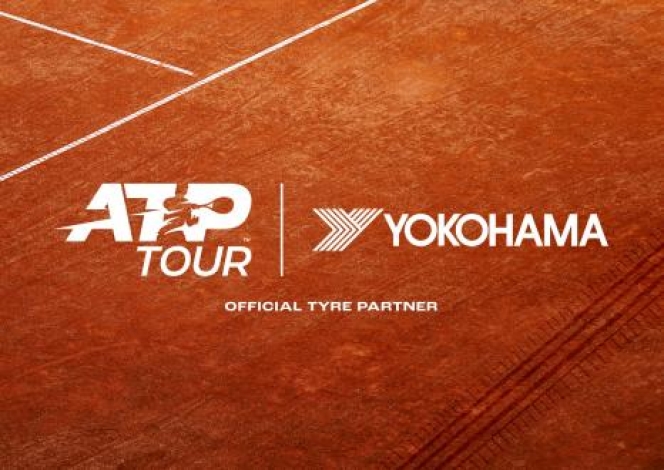
The Yokohama Rubber Co., Ltd. has solidified its position within the world of professional tennis by extending its official partnership with the Association of Tennis Professionals (ATP), the premier governing body for men's tennis. This renewed agreement, which now runs through 2028, confirms the company’s role as the ATP Tour’s Official Tyre Partner, a Gold-level sponsorship. The primary motivation behind this sustained alliance is to significantly elevate global recognition of the YOKOHAMA brand and to cultivate new avenues for sales, with a particular strategic focus on the European market.
As a central component of this partnership, Yokohama Rubber will be the sponsor of five key European tournaments held in Italy, Spain, Germany and Monaco. A highlight of this sponsorship portfolio is the prestigious ATP Finals, the season-ending championship that exclusively features the world’s top eight ranked singles players and doubles teams. This involvement grants the company extensive promotional rights, including the ability to use the official ATP Tour logo in its marketing campaigns. Furthermore, the YOKOHAMA brand will receive substantial on-site visibility at these events and will be featured across the ATP’s massive digital platforms, which include social media channels with millions of followers and an official website that attracts hundreds of millions of annual views.
Adding a dynamic new layer to this collaboration, Yokohama Rubber will also become the official partner for the ATP Tour’s ‘Hot Shot of the Month’. This popular digital feature allows tennis fans worldwide to vote for their favourite shot from monthly competitions. This year-round partnership creates a continuous and engaging touchpoint, directly connecting the YOKOHAMA brand with the passionate global community of ATP fans.
- Tyre Stewardship Australia
- Tyrewise New Zealand
- Trans-Tasman Tyre Recycling Alliance
- Tyre Recycling
- End-Of-Life Tyres
Australia And NZ Join Forces In Groundbreaking Tyre Recycling Push
- By TT News
- November 17, 2025
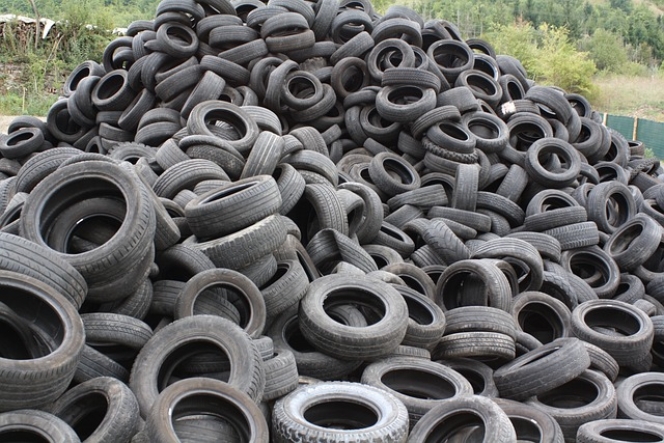
A new trans-Tasman alliance has been formed to fundamentally reshape the approach to end-of-life tyres in Australia and New Zealand. The Trans-Tasman Tyre Recycling Alliance (TTRA), a joint initiative of Tyre Stewardship Australia (TSA) and Tyrewise New Zealand, will function as an independent entity dedicated to advancing a circular economy for the sector. This collaboration arrives at a critical moment, as the two nations collectively discard more than 600,000 tonnes of tyres annually, presenting a significant environmental and economic challenge.
The urgency for such an alliance is underscored by recent data. In Australia, a mere 30,000 tonnes of end-of-life tyres are currently recycled domestically, leading to an estimated annual loss of over USD 50 million in resource value from large off-the-road tyres alone. Furthermore, a substantial portion of tyres in both countries are used for energy recovery rather than being transformed into valuable materials, highlighting a widespread missed opportunity for higher-value recovery. The TTRA will specifically champion advanced material applications, moving beyond this status quo to promote the use of crumb rubber in road construction, advanced manufacturing and innovative new products.
The alliance’s strategy is built upon five interconnected pillars: fostering technology and innovation, developing new markets for tyre-derived products, advocating for supportive policy and procurement standards, facilitating knowledge exchange across the industry and establishing a unified regional voice in global forums. This formal partnership allows both nations to leverage their distinct experiences; New Zealand can learn from Australia's more developed recycling markets, while Australia can gain insights from New Zealand's implementation of a regulated, mandatory stewardship scheme.
Scheduled to commence full operations in early 2026, the TTRA will not replace the existing national schemes but will instead operate alongside them, with both TSA and Tyrewise contributing resources and expertise. The formation of the alliance follows a successful global industry summit and signals a concerted effort to elevate industry standards, drive investment and create a more sustainable future for tyre management across the Australasian region and eventually into the Pacific.
Lina Goodman, CEO, Tyre Stewardship Australia, said, "We must work together across borders to unlock the full potential of circular tyre recovery and build resilience against global market disruptions. Through TTRA, we can get ahead of risks, capitalise on opportunities and accelerate the development of local markets for tyre-derived materials. The formation of TTRA reflects growing momentum behind product stewardship, circular economy outcomes and government mandates on recycled content, particularly in infrastructure projects.”
Adele Rose, CEO of 3R Group which manages New Zealand’s Tyrewise scheme, said, "Tyrewise has demonstrated how quickly a regulated system can deliver high collection rates and meaningful recovery outcomes. Through TTRA, we can not only share our learnings but can also be the incubator for new technology that demonstrates how a regulated well-supported scheme can foster greater circular outcomes. In addition, this assists us to support our close pacific neighbours who receive new and used tyres from our respective countries, often without the resources to manage those tyres when they become end of life. This is about building resilient, circular economies that support jobs, innovation and environmental responsibility. The future of tyre recycling in our region depends on the kind of collaboration TTRA represents."
TyreSafe Launches National Drive For Fleet Tyre Safety With New Business Toolkits
- By TT News
- November 17, 2025

A new, comprehensive national campaign is underway to address the critical issue of tyre safety within UK fleets. Spearheaded by TyreSafe, the UK’s charity dedicated to raising tyre safety awareness, this six-week educational initiative is founded upon three specialised toolkits developed in collaboration with industry leaders Driving for Better Business (DfBB), FORS and Lancashire County Council. This represents the most extensive suite of business-focused tyre safety resources the organisation has ever released, aiming to help companies strengthen compliance, enhance driver safety and achieve significant operational cost savings.
The campaign seeks to reframe tyre maintenance from a purely technical concern to a core business priority with profound implications. Neglected tyres present a major safety hazard, contributing to a heightened risk of collisions. Alarmingly, government data reveals that in 2024, 29 percent of all road fatalities occurred in incidents involving someone driving for work. Beyond the human cost, poorly maintained tyres have a direct financial and environmental impact; they waste fuel, increase emissions and lead to premature wear. This is particularly concerning given that transport remains a primary source of UK greenhouse gas emissions. Research underscores the scale of the problem, indicating that a majority of tyres on UK roads are underinflated and a significant number of vehicles are operating with at least one dangerous tyre.
To provide practical solutions, the three new toolkits offer step-by-step guidance and editable resources for seamless implementation. Developed with DfBB, the Grey Fleet Toolkit assists employers in managing the safety of employee-owned vehicles used for business purposes. In partnership with FORS, the Fleet Tyre Management Toolkit helps companies embed industry best practices for tyre procurement, inspection and maintenance. Finally, the Fleet Service Manager Toolkit, created with Lancashire County Council, provides fleet leaders and workshop managers with the materials needed to integrate tyre safety into staff training and daily operational checks. This broader effort by TyreSafe encourages businesses to view proper tyre care through the interconnected lenses of legal compliance, financial cost and carbon footprint, demonstrating how correct maintenance simultaneously reduces risk, saves money and supports sustainability targets. All resources are now available on the TyreSafe website.
Stuart Lovatt, TyreSafe Chair, said, “Tyre safety is not just about maintenance – it’s about responsibility. Every underinflated or worn tyre adds to a business’s costs, carbon footprint and legal exposure. Through these new toolkits and our six-week education campaign, we want to help fleets of every size understand that tyre safety is a measurable way to protect lives, budgets and reputations. Lancashire County Council’s partnership shows how tyre safety can be woven into daily operations, not added as an afterthought. By embedding simple checks into training and supervision, fleet teams can prevent incidents before they happen. Tyres are often missed during daily checks but one of the biggest influences on safety. We urge business drivers and fleet managers to ACT to ensure sound tyre safety management is included in their fleet policies which can make every journey safer, more efficient and sustainable.”
Simon Turner, Engagement Manager, DfBB, said, “Grey fleet drivers represent a hidden risk for many employers. This toolkit helps organisations bring them into the same safety and compliance framework as company drivers – meeting legal obligations and protecting everyone on the road.”
Daniel Fisher, Fleet Services Manager, Lancashire County Council, said, “Partnering with TyreSafe has allowed us to leverage our fleet management experience to provide practical guidance for others. The Fleet Service Manager Toolkit shows how simple, consistent tyre checks can improve compliance, cut costs and keep drivers safer. It’s a model that any organisation – public or private – can adopt.”


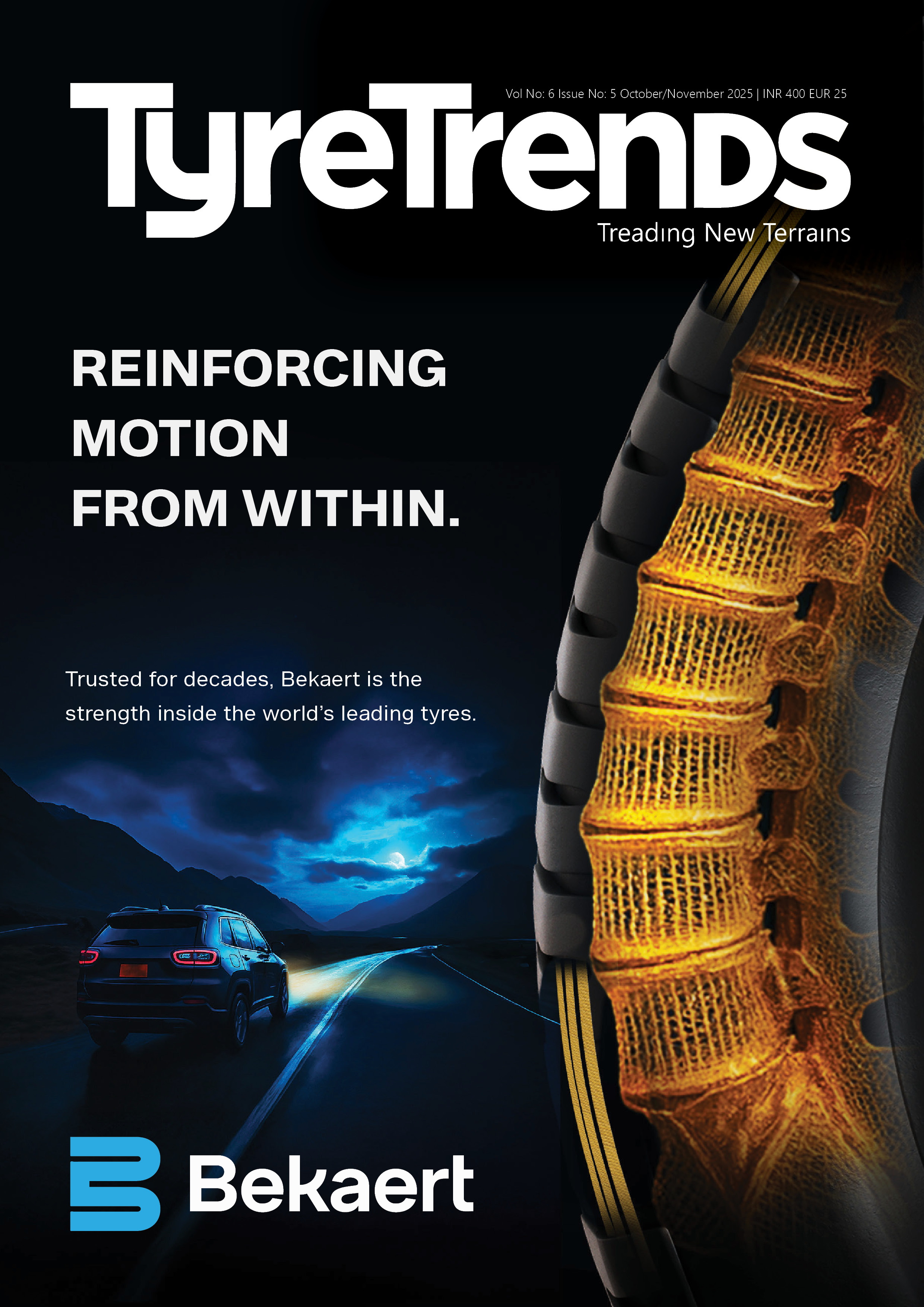
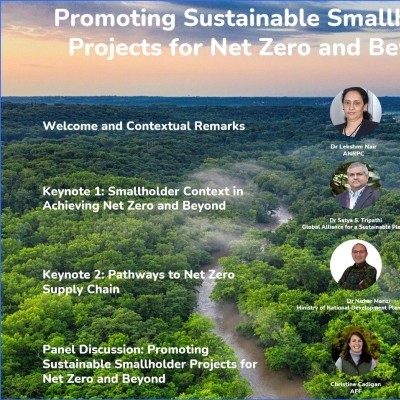
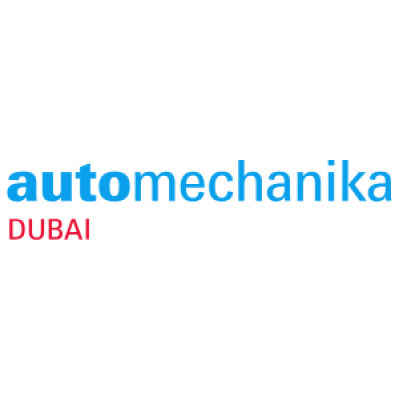


Comments (0)
ADD COMMENT